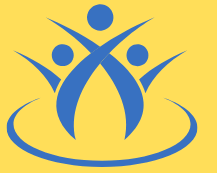Health allowance card is important for knowing. Healthcare costs are rising worldwide, and for many individuals and families, the financial burden of medical treatment can feel overwhelming. Governments, employers, and insurance providers in several countries have introduced health allowance cards to ease these challenges. These cards function like a dedicated health fund, helping cover essential medical expenses such as doctor consultations, prescription medicines, diagnostic tests, and hospital bills.
If you’ve been wondering how to get a health allowance card, you’re not alone. Many people are curious about eligibility requirements, the application process, and the benefits such a card can provide.
This guide breaks it down in detail so you can make informed decisions for yourself and your loved ones.
1. What Is a Health Allowance Card?
Before diving into how to get a health allowance card, it’s important to understand what it is.
A health allowance card is a physical or digital card issued by governments, insurance companies, or employers to provide financial support for healthcare. Unlike regular debit or credit cards, these are specifically designed for health-related spending. The allowance could come from:
-
Government programs: Offered to citizens as part of social welfare or national health schemes.
-
Employer benefits: Companies may provide health cards loaded with annual or monthly funds for employee wellness.
-
Insurance add-ons: Some health insurance providers include a card that covers co-pays, medications, or wellness expenses.
In simple terms, a health allowance card acts as a dedicated wallet for healthcare.
2. Why Do You Need a Health Allowance Card?
Knowing why you need one is just as important as knowing how to get a health allowance card. Here are the key reasons:
-
Financial Security – Unexpected medical emergencies can destabilize finances. A health card ensures you have funds available.
-
Cashless Transactions – Many hospitals and pharmacies accept these cards directly, reducing the need for out-of-pocket payments.
-
Preventive Healthcare – Some programs cover wellness checkups, vaccinations, and screenings, encouraging people to take proactive care.
-
Employer Benefits – Having this card can improve job satisfaction and loyalty because employees feel supported.
-
Accessibility – For low-income families, government-issued health allowance cards can be a lifeline.
3. Types of Health Allowance Cards
Understanding the types can help you decide how to get a health allowance card that matches your needs.
3.1 Government-Issued Health Allowance Cards
-
Example: India’s Ayushman Bharat Health Card or state-level schemes.
-
Target Group: Low-income families, senior citizens, or individuals with disabilities.
-
Benefit: Free or heavily subsidized treatment at partnered hospitals.
3.2 Employer-Sponsored Health Cards
-
Example: Corporate health benefits in the U.S., Singapore, or Europe.
-
Target Group: Full-time employees and sometimes their dependents.
-
Benefit: Covers annual health checkups, medications, and preventive care.
3.3 Insurance-Linked Health Allowance Cards
-
Example: Health Savings Accounts (HSA) cards in the U.S. or insurance top-up cards in Asia.
-
Target Group: Policyholders with specific coverage plans.
-
Benefit: Covers deductibles, prescriptions, or extra wellness programs.
3.4 Special Group Cards
-
Military veterans, students, and retirees may receive specialized health allowance cards tailored to their unique healthcare needs.
4. Eligibility: Who Can Get a Health Allowance Card?
If you want to know how to get a health allowance card, start by checking eligibility. While requirements vary by country and issuer, here are common factors:
-
Income level – Government programs often target low or middle-income households.
-
Employment status – Employer-sponsored cards usually require full-time employment.
-
Insurance coverage – Some health allowance cards are only available if you hold a policy with a specific insurer.
-
Age and medical condition – Seniors, children, or patients with chronic diseases may qualify for priority access.
-
Residency or citizenship – Proof of residence or citizenship may be required for government-issued cards.
5. Step-by-Step Guide: How to Get a Health Allowance Card
Now let’s break down the process of how to get a health allowance card in clear steps.
Step 1: Research Available Options
-
Start with your country’s government health ministry or local welfare programs.
-
Ask your HR department about employer-sponsored options.
-
Compare private insurance plans that offer health cards.
Step 2: Check Eligibility
-
Review income thresholds, age requirements, or employment conditions.
-
Gather supporting documents such as ID, income proof, employment letters, or medical records.
Step 3: Submit an Application
-
Government cards: Apply online through official portals or at local health offices.
-
Employer cards: Enrollment often happens automatically, but you may need to register dependents.
-
Insurance cards: Apply via the insurer’s website, agent, or customer support center.
Step 4: Verification and Approval
-
The issuing authority will verify your information.
-
This may involve background checks, income assessments, or medical eligibility confirmation.
Step 5: Receive Your Card
-
Cards may be mailed, digitally issued, or picked up at designated centers.
-
Activation may be required—usually through a phone call or online portal.
Step 6: Start Using Your Card
-
Present the card at approved hospitals, pharmacies, or clinics.
-
Keep track of balance and usage through mobile apps or monthly statements.
6. Documents Needed for Application
One major part of learning how to get a health allowance card is knowing what paperwork is required. Typical documents include:
-
Government-issued ID (passport, driver’s license, Aadhaar, Social Security card, etc.)
-
Proof of income (salary slips, tax documents)
-
Proof of residence (utility bills, rental agreements)
-
Employment verification (if employer-sponsored)
-
Insurance policy details (for insurer-linked cards)
-
Medical records (in case of special needs eligibility)
7. Benefits of Having a Health Allowance Card
When considering how to get a health allowance card, it helps to know the benefits you’ll gain:
-
Financial Protection – Avoid large out-of-pocket medical bills.
-
Convenience – Easy cashless transactions at partnered hospitals and pharmacies.
-
Coverage for Family – Many cards allow dependent family members to benefit.
-
Preventive Care – Encourages regular checkups and screenings.
-
Employer Advantage – Enhances workplace morale and employee health.
-
Subsidized Healthcare – Government programs provide free or low-cost treatment.
8. Challenges in Getting a Health Allowance Card
While learning how to get a health allowance card, you should also be aware of challenges:
-
Awareness gap: Many eligible individuals don’t know these programs exist.
-
Application delays: Government processes may involve long waiting times.
-
Limited network: Some cards only work in specific hospitals or regions.
-
Eligibility restrictions: Not everyone qualifies, leaving some groups uncovered.
-
Balance limitations: Monthly or annual allowances may not fully cover high medical costs.
9. Tips for Maximizing Your Health Allowance Card
Once you learn how to get a health allowance card, the next step is making the most of it:
-
Use it for preventive care – Regular checkups help detect diseases early.
-
Track your spending – Avoid running out of balance during emergencies.
-
Understand coverage limitations – Know what expenses are eligible.
-
Combine with insurance – Use the card to cover deductibles or co-pays.
-
Educate your family – Ensure all dependents know how to use the card effectively.
10. Global Examples of Health Allowance Cards
India
The Ayushman Bharat Pradhan Mantri Jan Arogya Yojana (PM-JAY) provides eligible families with health cards that cover up to ₹5 lakh annually for hospitalization.
United States
Health Savings Account (HSA) debit cards let individuals use pre-tax dollars for qualified medical expenses.
European Union
Some countries issue health benefit cards to low-income groups, covering part of prescription or hospital costs.
Bangladesh
Government health card initiatives provide subsidized care to rural communities and workers in specific sectors.
These examples illustrate how different regions implement health allowance card programs tailored to local healthcare systems.
11. Future of Health Allowance Cards
The demand for accessible healthcare funding is growing. The future of health allowance cards is likely to include:
-
Digital wallets and mobile apps for seamless transactions.
-
AI-based eligibility checks for faster approvals.
-
Global portability allowing travelers to use health cards abroad.
-
Integration with telemedicine services for virtual consultations.
12. Frequently Asked Questions (FAQs)
Q1. What is the difference between a health insurance card and a health allowance card?
-
A health insurance card is linked to an insurance policy, while a health allowance card provides a preloaded amount to spend directly on medical needs.
Q2. Can I apply online for a health allowance card?
-
Yes, most government and private providers offer online applications through official websites or mobile apps.
Q3. Is there an age limit for getting a health allowance card?
-
It depends on the program. Government schemes often target seniors and children, while employer cards cover working-age employees.
Q4. Can I use the health allowance card for my family members?
-
Many cards allow dependent coverage, but you need to register them during application.
Q5. Does the balance expire?
-
Some programs have annual renewal cycles. Unused funds may expire, so it’s best to use them before the deadline.
13. Final Thoughts
If you’ve been searching how to get a health allowance card, this guide shows that the process involves research, eligibility verification, and proper application. Whether through government programs, employer benefits, or insurance add-ons, these cards can significantly reduce the financial stress of healthcare.
The key is to explore all options available in your region, prepare the necessary documents, and apply as early as possible. Once you secure your card, you’ll gain not just financial protection but also peace of mind knowing you’re prepared for medical expenses.
Healthcare is a fundamental human right, and health allowance cards are one of the most practical tools to make it more accessible. By taking the right steps now, you can safeguard your health and your finances for the future.




